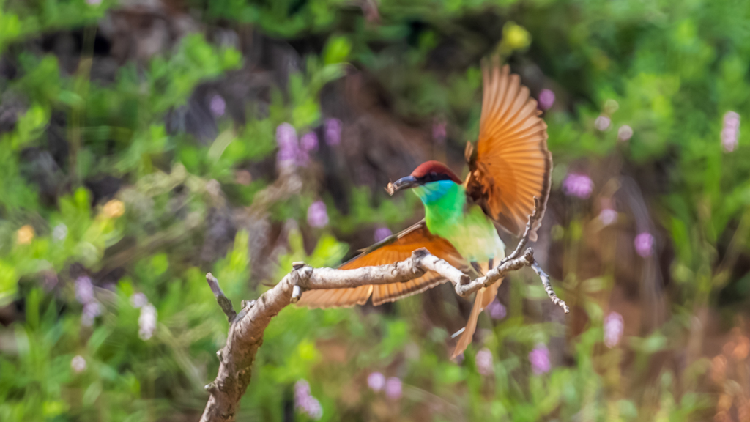Blue-Throated Bee-Eater Showcases Lightning-Fast Hunting Skills in Stunning Aerial Display
Summer brings a surge of blue-throated bee-eaters to Nanchang, delighting local birdwatchers with their vibrant plumage.

With the arrival of summer, the wetlands and woodlands of Nanchang, Jiangxi have been graced by the vibrant presence of the blue-throated bee-eater, drawing the attention of birdwatchers and nature enthusiasts alike. The striking plumage and acrobatic displays of these birds have become a seasonal highlight, as an increasing number of them are spotted gliding between the branches and darting across the sky in their characteristic, lightning-fast maneuvers.
The blue-throated bee-eater is celebrated as “China’s most beautiful little bird”, boasting a stunning array of colors: vivid blue throats, chestnut crowns, and emerald feathers that shimmer in the sunlight. Designated as a second-level nationally protected wild animal, this species enjoys special conservation status, reflecting its ecological importance and the threats facing its populations. Their preferred prey—bees and other flying insects—demonstrates the bird’s remarkable precision and agility; it swoops through the air, catching prey mid-flight with effortless grace.
Every year, as temperatures rise, these bee-eaters migrate to southern China to breed and court mates. The males, seeking to impress, perform intricate aerial stunts, weaving through branches and snatching bees with astonishing accuracy—behavior that has earned them comparison to both the speed of a swallow and the ferocity of a tiger. Observers have delighted in watching these birds engage in their unique mating rituals, which include gifting caught insects to potential partners and synchronized flights above the wetlands.
The increased sightings in Nanchang suggest that local habitats remain conducive to supporting these delicate creatures. Conservationists are urging the public to respect the birds’ nesting grounds and to continue efforts in preserving wetland and woodland environments, which are crucial for the survival of the bee-eater and many other migratory species. As the blue-throated bee-eaters put on their dazzling performances overhead, they serve as a living symbol of nature’s beauty—and a reminder of the importance of protecting China’s rich biodiversity.




